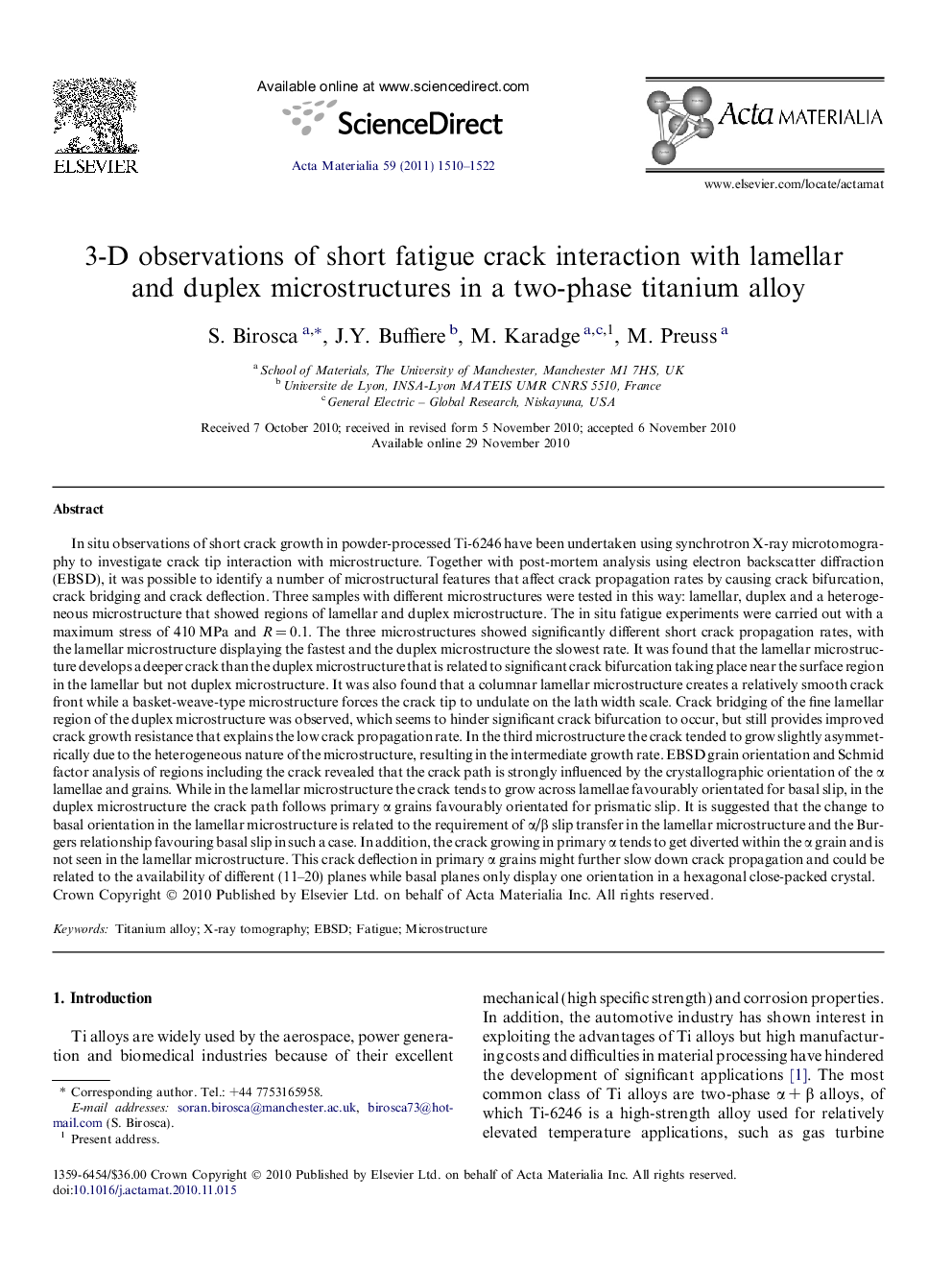| کد مقاله | کد نشریه | سال انتشار | مقاله انگلیسی | نسخه تمام متن |
|---|---|---|---|---|
| 10620606 | 988645 | 2011 | 13 صفحه PDF | دانلود رایگان |
عنوان انگلیسی مقاله ISI
3-D observations of short fatigue crack interaction with la2mellar and duplex microstructures in a two-phase titanium alloy
دانلود مقاله + سفارش ترجمه
دانلود مقاله ISI انگلیسی
رایگان برای ایرانیان
کلمات کلیدی
موضوعات مرتبط
مهندسی و علوم پایه
مهندسی مواد
سرامیک و کامپوزیت
پیش نمایش صفحه اول مقاله

چکیده انگلیسی
In situ observations of short crack growth in powder-processed Ti-6246 have been undertaken using synchrotron X-ray microtomography to investigate crack tip interaction with microstructure. Together with post-mortem analysis using electron backscatter diffraction (EBSD), it was possible to identify a number of microstructural features that affect crack propagation rates by causing crack bifurcation, crack bridging and crack deflection. Three samples with different microstructures were tested in this way: lamellar, duplex and a heterogeneous microstructure that showed regions of lamellar and duplex microstructure. The in situ fatigue experiments were carried out with a maximum stress of 410 MPa and R = 0.1. The three microstructures showed significantly different short crack propagation rates, with the lamellar microstructure displaying the fastest and the duplex microstructure the slowest rate. It was found that the lamellar microstructure develops a deeper crack than the duplex microstructure that is related to significant crack bifurcation taking place near the surface region in the lamellar but not duplex microstructure. It was also found that a columnar lamellar microstructure creates a relatively smooth crack front while a basket-weave-type microstructure forces the crack tip to undulate on the lath width scale. Crack bridging of the fine lamellar region of the duplex microstructure was observed, which seems to hinder significant crack bifurcation to occur, but still provides improved crack growth resistance that explains the low crack propagation rate. In the third microstructure the crack tended to grow slightly asymmetrically due to the heterogeneous nature of the microstructure, resulting in the intermediate growth rate. EBSD grain orientation and Schmid factor analysis of regions including the crack revealed that the crack path is strongly influenced by the crystallographic orientation of the α lamellae and grains. While in the lamellar microstructure the crack tends to grow across lamellae favourably orientated for basal slip, in the duplex microstructure the crack path follows primary α grains favourably orientated for prismatic slip. It is suggested that the change to basal orientation in the lamellar microstructure is related to the requirement of α/β slip transfer in the lamellar microstructure and the Burgers relationship favouring basal slip in such a case. In addition, the crack growing in primary α tends to get diverted within the α grain and is not seen in the lamellar microstructure. This crack deflection in primary α grains might further slow down crack propagation and could be related to the availability of different (11-20) planes while basal planes only display one orientation in a hexagonal close-packed crystal.
ناشر
Database: Elsevier - ScienceDirect (ساینس دایرکت)
Journal: Acta Materialia - Volume 59, Issue 4, February 2011, Pages 1510-1522
Journal: Acta Materialia - Volume 59, Issue 4, February 2011, Pages 1510-1522
نویسندگان
S. Birosca, J.Y. Buffiere, M. Karadge, M. Preuss,